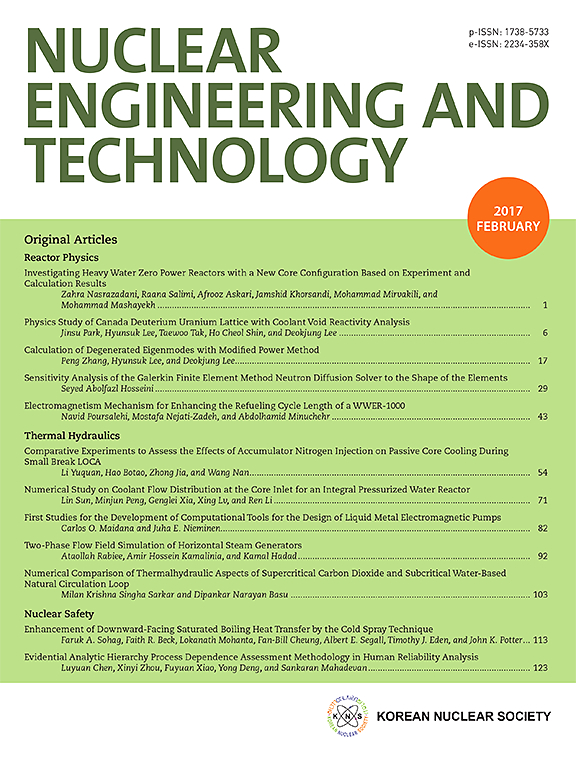一个计算带电粒子相互作用参数的简单软件
IF 2.6
3区 工程技术
Q1 NUCLEAR SCIENCE & TECHNOLOGY
引用次数: 0
摘要
一个新的,用户友好的软件称为带电粒子的相互作用已经开发模拟离子相互作用在各种应用。InChaP具有强大的物理公式和使用Python软件包的计算技术,在0.01-1000 MeV的宽能量范围内工作。InChaP计算质量停止功率,停止横截面,相对停止功率,有效原子序数,以及任何化合物或复合材料的电子密度,使用对数插值程序在广泛的离子能量范围内。它还生成工作范围内特定离子能量的参数,用户可以以通用电子表格格式获得结果。该软件是免费提供给所有的研究人员。InChaP的有效原子序数与文献中一些可能的结果吻合较好。在1 MeV下计算脾脏的有效原子序数时,He离子相互作用和电子相互作用的差异%≤11.44,差异%≤1.94。本文章由计算机程序翻译,如有差异,请以英文原文为准。
InChaP: A simple software for computation of charged particle interaction parameters
A new, user-friendly software called Interaction of Charged Particle has been developed to simulate ion interactions across various applications. Designed with robust physical formulations and computational techniques using Python packages, InChaP operates within a broad energy range of 0.01–1000 MeV. InChaP calculates mass stopping power, stopping cross-section, relative stopping power, effective atomic number, and electron density for any chemical compound or composite using a logarithmic interpolation procedure across a wide range of ion energies. It also generates parameters for a specific ion of energy within the working range, and users can obtain the results in common spreadsheet formats. The software is freely available to all researchers. Good agreements were obtained in the effective atomic number between InChaP and some possible results from literature. These agreements were and for He ion interaction and for electron interaction in calculation of effective atomic number for spleen at 1 MeV.
求助全文
通过发布文献求助,成功后即可免费获取论文全文。
去求助
来源期刊

Nuclear Engineering and Technology
工程技术-核科学技术
CiteScore
4.80
自引率
7.40%
发文量
431
审稿时长
3.5 months
期刊介绍:
Nuclear Engineering and Technology (NET), an international journal of the Korean Nuclear Society (KNS), publishes peer-reviewed papers on original research, ideas and developments in all areas of the field of nuclear science and technology. NET bimonthly publishes original articles, reviews, and technical notes. The journal is listed in the Science Citation Index Expanded (SCIE) of Thomson Reuters.
NET covers all fields for peaceful utilization of nuclear energy and radiation as follows:
1) Reactor Physics
2) Thermal Hydraulics
3) Nuclear Safety
4) Nuclear I&C
5) Nuclear Physics, Fusion, and Laser Technology
6) Nuclear Fuel Cycle and Radioactive Waste Management
7) Nuclear Fuel and Reactor Materials
8) Radiation Application
9) Radiation Protection
10) Nuclear Structural Analysis and Plant Management & Maintenance
11) Nuclear Policy, Economics, and Human Resource Development
 求助内容:
求助内容: 应助结果提醒方式:
应助结果提醒方式:


